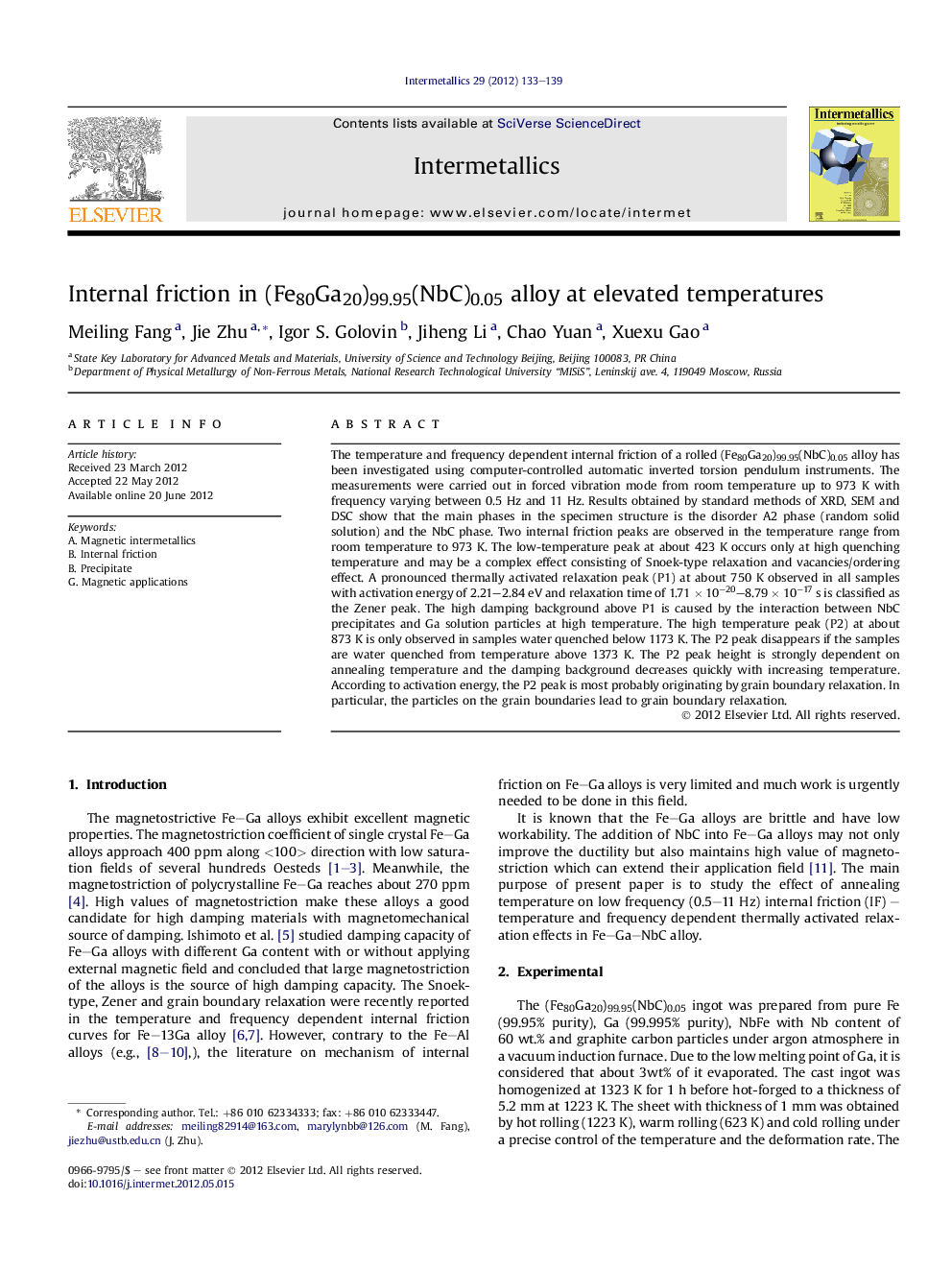| Article ID | Journal | Published Year | Pages | File Type |
|---|---|---|---|---|
| 1600443 | Intermetallics | 2012 | 7 Pages |
The temperature and frequency dependent internal friction of a rolled (Fe80Ga20)99.95(NbC)0.05 alloy has been investigated using computer-controlled automatic inverted torsion pendulum instruments. The measurements were carried out in forced vibration mode from room temperature up to 973 K with frequency varying between 0.5 Hz and 11 Hz. Results obtained by standard methods of XRD, SEM and DSC show that the main phases in the specimen structure is the disorder A2 phase (random solid solution) and the NbC phase. Two internal friction peaks are observed in the temperature range from room temperature to 973 K. The low-temperature peak at about 423 K occurs only at high quenching temperature and may be a complex effect consisting of Snoek-type relaxation and vacancies/ordering effect. A pronounced thermally activated relaxation peak (P1) at about 750 K observed in all samples with activation energy of 2.21–2.84 eV and relaxation time of 1.71 × 10−20–8.79 × 10−17 s is classified as the Zener peak. The high damping background above P1 is caused by the interaction between NbC precipitates and Ga solution particles at high temperature. The high temperature peak (P2) at about 873 K is only observed in samples water quenched below 1173 K. The P2 peak disappears if the samples are water quenched from temperature above 1373 K. The P2 peak height is strongly dependent on annealing temperature and the damping background decreases quickly with increasing temperature. According to activation energy, the P2 peak is most probably originating by grain boundary relaxation. In particular, the particles on the grain boundaries lead to grain boundary relaxation.
Graphical abstractFigure optionsDownload full-size imageDownload as PowerPoint slideHighlights► Internal friction and microstructures of (Fe80Ga20)99.95(NbC)0.05 alloy is studied. ► Annealing temperature has significant effect on internal friction of Fe–Ga alloys. ► Thermally activated peaks are discussed according to the activation parameters.
